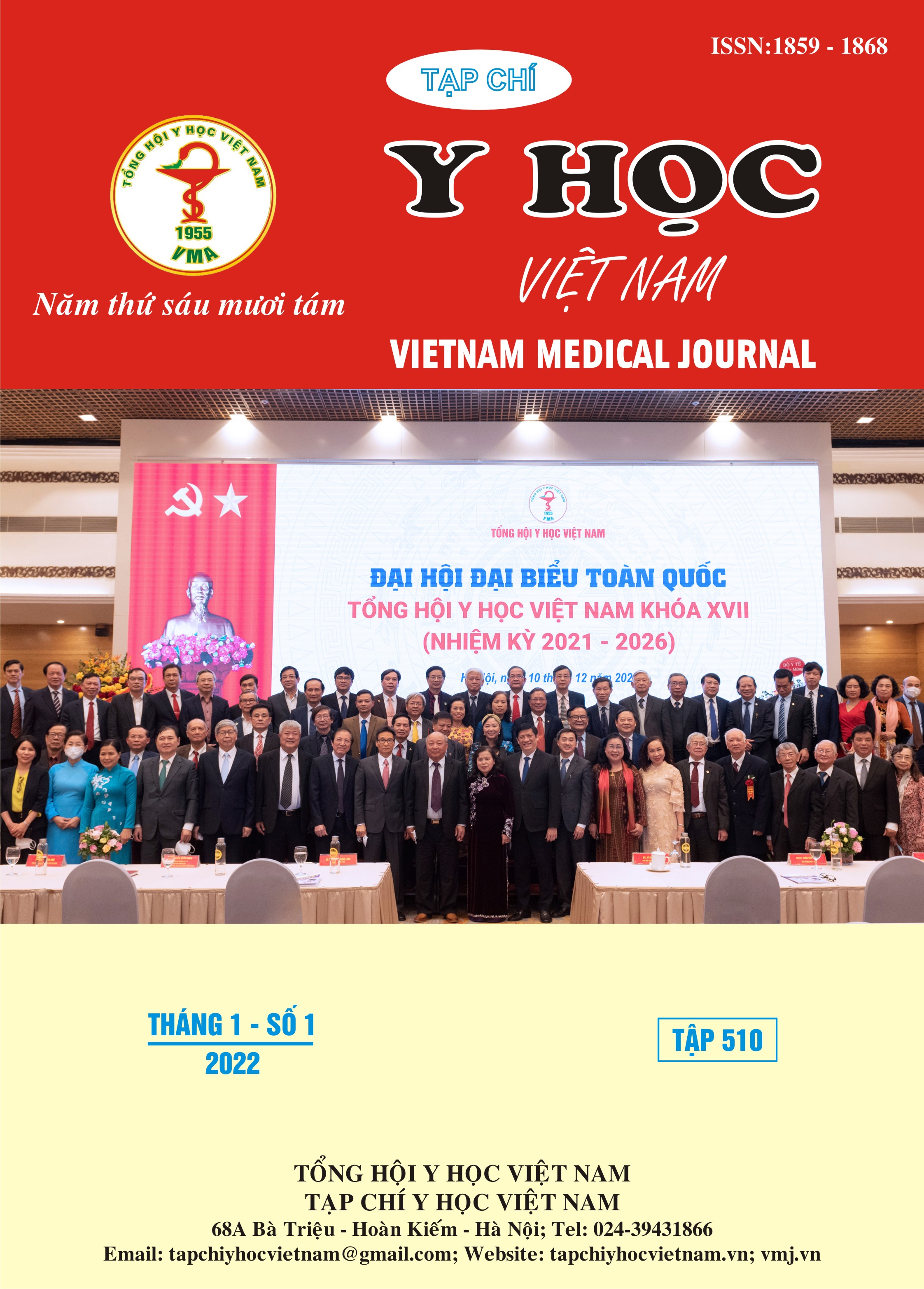CLINICAL CHARACTERISTICS, IMAGES OF ULTRASOUND OF PATIENTS WITH CARPAL TUNNEL SYNDROME
Main Article Content
Abstract
Aim: Description of the clinical characteristics and images of power Doppler ultrasound of patients with carpal tunnel syndrome treated at Thai Nguyen National Hospital. Subjects and methods: Cross-sectional description of 36 patients with 49 carpal tunnels diagnosed with carpal tunnel syndrome according to National Institute for Occupational Safety and Health in 1993 from July 2020 to July 2021. Result: Female/male ratio = 8/1. The mean age of the patients was 54,4 ±12. Clinical symptoms of the patients was: 98,0% of numbness, 87,8% with pain along the median nerve, 75,5% of paresthesia during day and night, 79,6% of decreased or lostsensation in the finger III, IV, V. Phalen test (+)was found in 87,8% of carpal tunnels, Tinel sign (+) in 63,3% of the ones, Ducan test (+) in 53,1% of the ones. There was 57,1% of the carpal tunnels with Notch sign (+), reversed Notch sign (+) in 4.1% of the carpal tunnels. Signs of angiogenesis were found in 55,1% of the carpal tunnel. The median nerve area proximal to the carpal tunnel averaged 11,1± 1,9 on the preferred hand and 11,7±1,4 on the other hand. Conclusion: The most common clinical symptoms of carpal tunnel syndrome were the result of the damaged median nerve. Ultrasound helps to confirm the diagnosis of carpal tunnel syndrome by showing increased angiogenesis in the nerve, Notchs sign, and increased area of the median nerve near the carpal tunnel.
Article Details
Keywords
Carpal tunnel syndrome, clinical characteristics, power Doppler ultrasound
References
2. Đoàn Viết Trình, Bùi Văn Lệnh (2015), "Đặc điểm hình ảnh và vai trò của siêu âm trong chẩn đoán và theo dõi sau phẫu thuật hội chứng ống cổ tay", Nghiên cứu khoa học. 20,pp.12-17.
3. Lê Thị Liễu (2018), Nghiên cứu đặc điểm lâm sàng, điện cơ và siêu âm doppler năng lượng trong hội chứng ống cổ tay, Đại học Y Hà Nội.
4. Nguyễn Văn Hướng, Lê Thị Trang (2019), "Đánh giá một số yếu tố liên quan đến hội chứng ống cổ tay trên bệnh nhân người trưởng thành", Tạp chí nghiên cứu y học. 117 (1),pp.77-83.
5. Jenkins P. J., Srikantharajah D., Duckworth A. D., et al. (2013), "Carpal tunnel syndrome: the association with occupation at a population level", J Hand Surg Eur Vol. 38 (1),pp.67-72.
6. Iida J., Hirabayashi H., Nakase H., et al. (2008), "Carpal tunnel syndrome: electrophysiological grading and surgical results by minimum incision open carpal tunnel release", Neurol Med Chir (Tokyo). 48 (12),pp.554-559.
7. Padua L., Coraci D., Erra C., et al. (2016), "Carpal tunnel syndrome: clinical features, diagnosis, and management", Lancet Neurol. 15 (12),pp.1273-1284.
8. "Practice parameter for electrodiagnostic studies in carpal tunnel syndrome: summary statement. American Association of Electrodiagnostic Medicine, American Academy of Neurology, American Academy of Physical Medicine and Rehabilitation", (1993), Muscle Nerve. 16 (12),pp.1390-1391.


